We continue to see the market flooded with brands putting out their points of view and trying to distinguish themselves via “thought leadership” activity. This includes blog posts, white papers, social media sharing, speaking engagements, video content, and more.
With the thought leadership space so densely crowded, what is the intangible that will differentiate YOUR thought leadership efforts from those of your competitors? The answer lies in a disciplined market research process.
Discovery
The discovery phase begins with a framing workshop that typically builds on design thinking elements to identify new perspectives, white space not already saturated by the market, key hypothesis, and a critical angle (or ‘lens’) that you might want to represent.
It is important to involve leaders in your business and deep subject matter experts (SMEs) as appropriate. The in-depth-interviews then help understand similar issues but from an EXTERNAL perspective (customers, prospects, etc.), and how they frame, define, and speak about these topics.
Discovery could also include social media scraping and even ‘desk’ research to assess how the market is reacting to specific topics.
Validation
Building off the discovery phase, validation is achieved with online, quantitative surveys. Survey data informs each key topic area and provides the ability to conduct deeper statistical analysis. Depending upon the need, good tools for discussing the key thought leadership themes include segmentation, driver analysis, and/or indices.
This statistical work creates talking points for building your thought leadership narrative:
- Why do ‘leaders’ in this area have specific success?
- What barriers are ‘laggards’ in this area trying to overcome?
- Which attributes and characteristics tend to motivate certain behaviors in customers?
- Identify areas of need that your brand can support in this specific topic area.
Validation could also include a series of deep dive, qualitative phone interviews – with the goal of building quotes/ verbatims to use in future thought leadership pieces you may create. Adding color and true ‘voice of the customer’ relevance to the topic at hand.
While it seems like almost everyone is trying their hand at thought leadership, this disciplined process has served our clients very well. The output yields unique, creative, and statistically validated points of view – directly based upon customers in the markets that your brand cares about.
Click here for four quick guideposts to help ensure that you get the most from your thought leadership research investments.



